
Living the StuG Life – All About Efficiency
The StuG is one of the most successful of all of Germany’s armored vehicles used during the Second World War. Small, cheap, and packing a punch, the StuG maximised efficiency.
It exemplifies why the much-discussed “iron triangle” of mobility, firepower and protection has little practical impact on a vehicle’s actual procurement and success. Was the StuG a fast vehicle? No. Was it a well-armored vehicle? Not particularly. Did it have the most powerful gun? Certainly not.
What made the StuG successful and popular enough for Germany to build over 12,000 of them, was it was cheap, easy to make, and good enough at what was asked of it.
Origins
In 1936, famed German commander Erich von Manstein proposed the idea of using heavily armed tracked vehicles that operated as escorting artillery. Known as Sturmartillerie (assault artillery), they would move with infantry, and provide rapid fire support against targets like machine gun nests and bunkers.
In essence, they would serve as an immediate and highly accurate form of artillery. While they were to be tracked and armored, they would be distinctly separate from tank forces, which, as Manstein put it, would “prevent both from working under false tactical doctrines“.
Shortly after Manstein’s proposal, Germany’s artillery branch commissioned the development of such a vehicle. Daimler-Benz was contracted to develop the overall vehicle, and Krupp was contracted to design the gun.
 The weapon of choice was the 7.5 cm KwK 37 L/24. It was good against soft targets.
The weapon of choice was the 7.5 cm KwK 37 L/24. It was good against soft targets.
This first vehicle would see the mounting of the short 7.5 cm KwK 37 from the Panzer IV, onto a Panzer III chassis.
To reduce weight, size, cost and complexity while maximising protection, it would be a casemate design, in which the main fighting compartment was contained within a fixed structure, instead of a turret.
This approach naturally required significant modifications to the basic Panzer III design. The turret and turret ring were deleted, as was the Panzer III’s upper glacis armor. They were replaced with a low profile armored box that contained all of the crew.
 Panzer III hulls on the production line. The StuG’s casemate was welded onto this gap.
Panzer III hulls on the production line. The StuG’s casemate was welded onto this gap.
This was welded directly on top of the tank’s hull.
The first vehicles would be completed in 1939, and were transferred to the artillery for troop trials in 1940. There were five in total, and all were made of soft-steel, so they couldn’t be used in combat.
Soon after the vehicle would enter production as the Gepanzerte Selbstfahrlafette Fuer Sturmgeschuets 7.5 cm Kanone (Sd.Kfz.142).
This name means armored self propelled gun for 7.5 cm assault gun, but is commonly referred to simply as StuG, an abbreviation of Sturmgeschuets (assault gun).
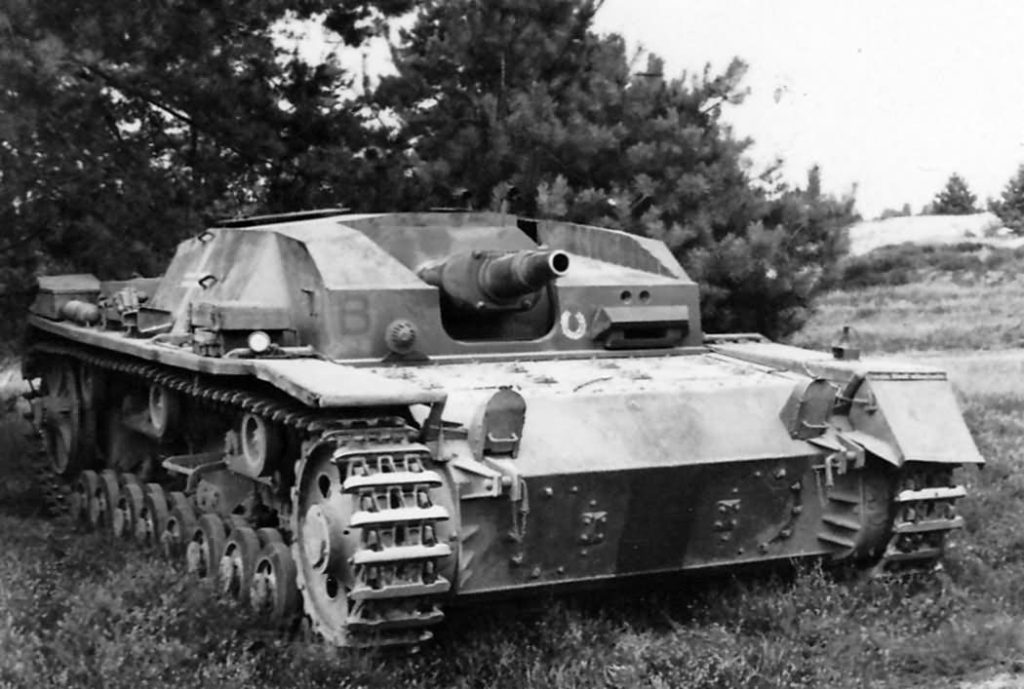 One of the StuG prototypes.
One of the StuG prototypes.
Following its entry into production, the StuG’s design received continuous changes and improvements, some of which made production easier, while other’s improved the capabilities of the vehicle. These changes were generally reflected in the large number versions (ausf, or ausführung, meaning “version” or “model”).
There were two major versions of the StuG, the StuG III and the StuG IV – these were very similar vehicles, but were based on the Panzer III and Panzer IV respectively.
Notable StuG Variants
The line began in 1940 with the StuG III Ausf.A, which was armed with the short 7.5 cm gun and a maximum of 50 mm of armor. The Ausf.B brought an improved transmission and wider tracks, along with new running gear to support them.
Both the Ausf.A and Ausf.B’s gunner sight peered through an opening in the upper-front left portion of the casemate.
The armor surrounding the sight was stepped to stop splash from incoming rounds, producing a very interesting appearance that helps easily identify A and B models.
 Note the splash guard around the gunner’s sights of this StuG III. This was only found on StuG Ausf. A and Bs.
Note the splash guard around the gunner’s sights of this StuG III. This was only found on StuG Ausf. A and Bs.
From the Ausf.C onwards, this opening was deleted and replaced with a gunner sight that simply protruded through the roof.
The next notable model was the StuG Ausf.F, which introduced a longer, much higher velocity 7.5 cm gun. This gun was rushed into the design after Germany encountered heavily armored Soviet tanks like the T-34 and KV-1 on the Eastern Front in 1941.
It was armed with either the 7.5 cm StuK 40 L/43, or the 7.5 cm StuK 40 L/48. This change required a new flat sided, “V”-shaped gun mantlet to accommodate the larger recoil cylinders.
 A StuG III Ausf.F. Note the longer 7.5 cm gun and square mantlet.
A StuG III Ausf.F. Note the longer 7.5 cm gun and square mantlet.
Throughout the different series of StuGs, they received additional armor plating that was either bolted or welded on.
In late 1942, the Sturmhaubitze entered production. This was an up-gunned version that carried a 10.5 cm howitzer, which was reflected in the name: Sturmhaubitze – meaning assault howitzer).
This version better followed the original intention of the StuG; to attack infantry and static targets.
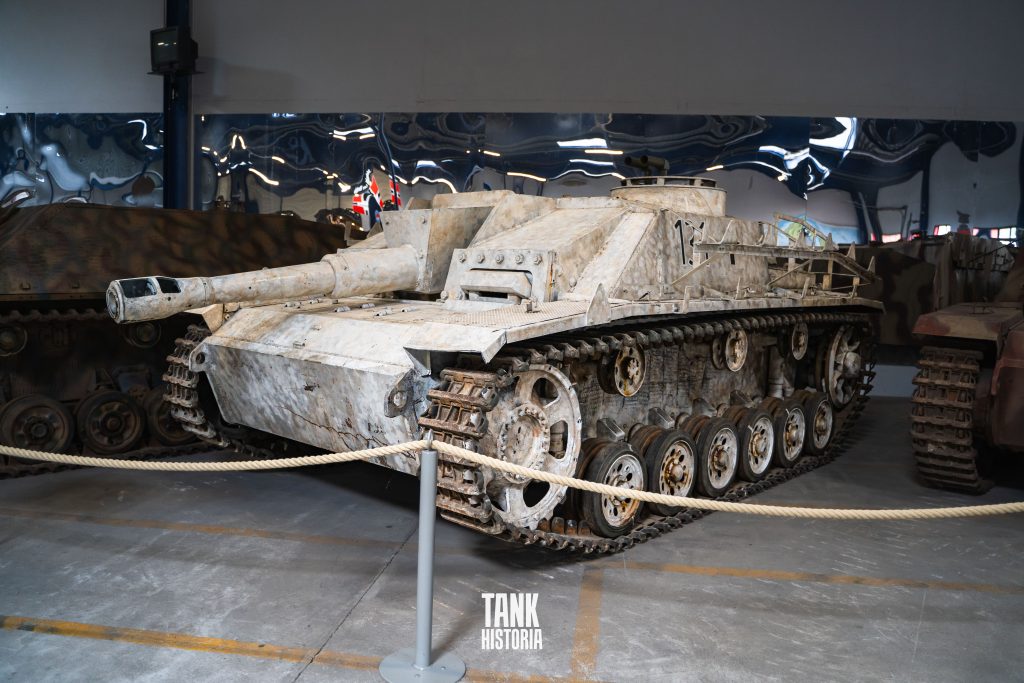 A Sturmhaubitze armed with a 10.5 cm howitzer. This example is located in the Musée des Blindés in Saumur, France.
A Sturmhaubitze armed with a 10.5 cm howitzer. This example is located in the Musée des Blindés in Saumur, France.
In December 1942 the StuG Ausf.G entered production. This was the final version of the StuG on the Panzer III chassis, and over its two-and-a-half year production run, received the famous Schürzen side skirts, a rotating commander’s cupola, Zimmerit paste, roof-mounted machine guns, and many more changes.
It was also better-armored as standard, now having 80 mm-thick plates on the front, instead of bolted-on armor. The Ausf.G was built until the end of the war, bringing the total StuG III production to over 11,000.
In late 1943, the StuG III’s manufacturer was severely damaged by an Allied bombing raid, cutting their production down to a tenth of what it was previously.
 StuG III Ausf.G, the most produced version of the StuG. Note this example is fitted with the Schürzen side skirts.
StuG III Ausf.G, the most produced version of the StuG. Note this example is fitted with the Schürzen side skirts.
To stabilise output, Krupp began the production of the StuG IV, which, as the name suggests, was built on the Panzer IV chassis.
This vehicle was made by placing the StuG III’s casemate on top of the hull, and adapting it to fit the slightly larger size of the Panzer IV. The gun was protected by the famous “Saukopf” cast mantlet.
Read More REVISTED: FV4005 and its 183 mm Cannon
Note that the term Saukopf, meaning “pig’s head“, was never used during the war. Instead, it was called the “Topfblende”, meaning “pot mantlet“.
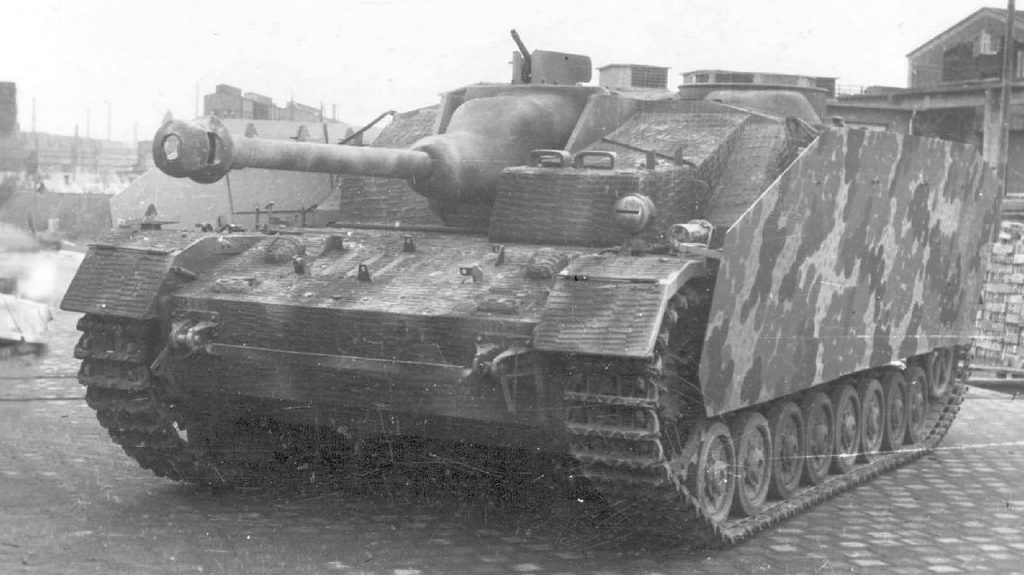 A StuG IV. Note the large square bulge around the driver’s position.
A StuG IV. Note the large square bulge around the driver’s position.
Production began in 1943 and continued to the end of war, for a total of 1,141 StuG IVs being built.
Like the StuG III, the StuG IV was continuously changed throughout its production, receiving chassis updates from the Panzer IV as they arrived, and casemate updates in line with the StuG III. Therefore many of the features found on StuG IIIs are also present on this vehicle.
An easy way to differentiate the two vehicles is by the number of return rollers; if it has three, it is a StuG III, and if it has four, it is a StuG IV.
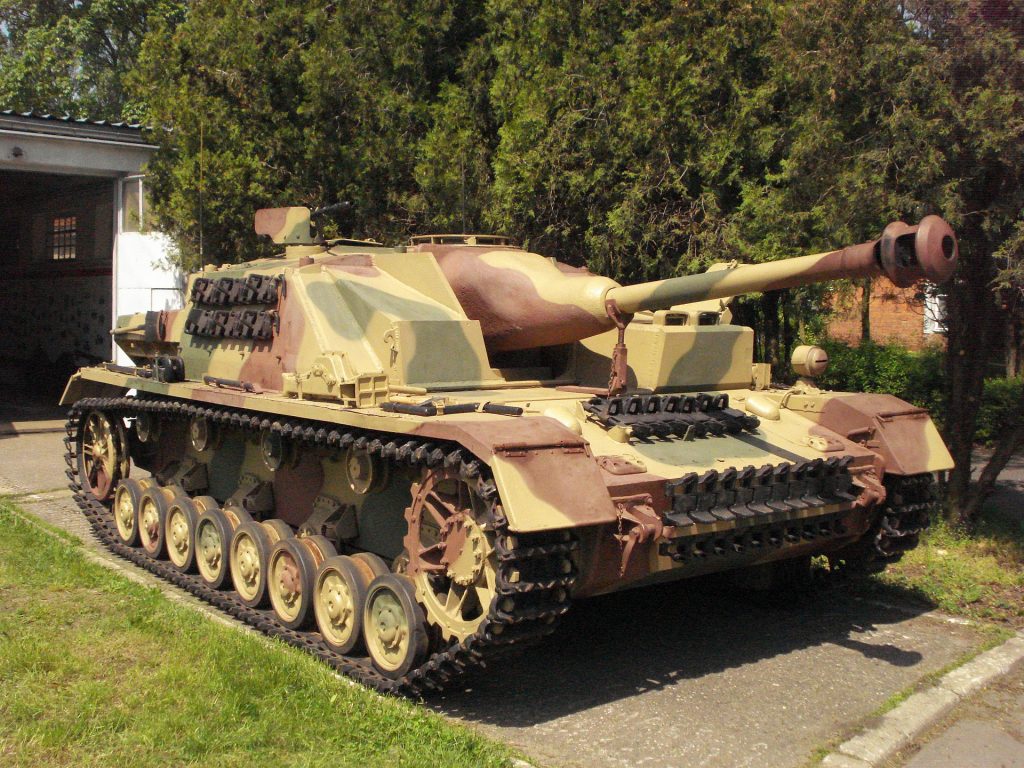 This StuG IV, located in the Muzeum Broni Pancernej in Poland, is one of only four of its type that survives today. Image by Maciej Borun CC BY 3.0.
This StuG IV, located in the Muzeum Broni Pancernej in Poland, is one of only four of its type that survives today. Image by Maciej Borun CC BY 3.0.
If the return rollers aren’t visible (such as if they are behind Schürzen side skirts), the StuG IV can be identified from the front by the driver’s large, box-shaped compartment on the left side, topped with two periscopes.
The StuG III has a uniform front, with a vision slit for the driver.
From the rear, the StuG IV has the Panzer IV’s “V”-shaped engine compartment/deck, while the StuG III has the Panzer III’s lower, angled rear with armored covers over the engine deck.
 StuG IV rear. The rear is the same as the Panzer IV.
StuG IV rear. The rear is the same as the Panzer IV.
Due to the long and varied production of the StuG, they can be seen with a huge number of modifications that weren’t only carried out in the factory, but also in the field. For example, older models of StuGs that originally had the short 7.5 cm gun can be seen with the long 7.5 cm.
This sometimes makes identifying exact models quite difficult.
The StuG’s Simple but Efficient Design
As mentioned, the StuG was produced on the chassis of Panzer IIIs and IVs. This conversion was actually rather simple; the hull remained mostly the same from the tank, and was fitted with a low-profile casemate that contained a gunner, loader, commander and driver.
At the front of the hull was the transmission. At the rear of the hull was the engine, an 11.9 litre (726 cu in) Maybach HL 120 petrol V12 that developed around 300 hp. Power was sent to the transmission at the front via a propshaft that ran through the fighting compartment.
The HL 120 was used on all StuGs, including both StuG IIIs and IVs. StuG IIIs weighed between 23 and 26 tons depending on the variant, and had a top speed of 25 mph (40 kph).
Meanwhile, the StuG IV weighed 29 tons and had a top speed of 24 mph.
 Maybach HL 120 V12 engine. Image by Stahlkocher CC BY-SA 3.0.
Maybach HL 120 V12 engine. Image by Stahlkocher CC BY-SA 3.0.
Over the course of the war the StuG received extra armor, more powerful guns, crew conveniences, and simplified components to speed up production. It started with the 7.5 cm StuK 37, a short-barrelled, low velocity gun that was specialised for the anti-infantry role.
Its high explosive rounds contained large amounts of explosive filler, and were most effective against targets like buildings, machine gun nests, and light fortifications. This reflects the StuG’s original role of “escorting artillery”.
In 1942 the StuG was up-armed with a longer, higher velocity 7.5 cm StuK 40. A similar version of this gun was used in the Panzer IV, and both were derivatives of the PaK 40 anti-tank gun. This was one of the most successful anti-tank guns of the war, capable of penetrating around 100 mm of armor at 1,000 meters.
The Sturmhaubitze was armed with a 10.5 cm leFH 18 howitzer, modified for use inside the StuG’s fighting compartment. This was the ultimate assault-gun version of the StuG, with its high explosive rounds containing much more explosive filling than the short-barrelled 7.5 cm.
Some Sturmhaubitzes received muzzle brakes, while others didn’t.
In terms of armor, the StuG started rather lightly armored (although respectable for 1940, when it was first introduced) and gradually received more. The basic armor scheme was 50 mm over most of the front, and 30 mm over the sides. The roof was 10 mm thick, and the belly was 15 mm.
 The StuK 40 was derived from the PaK 40, seen here in the middle of the image.
The StuK 40 was derived from the PaK 40, seen here in the middle of the image.
Many received extra 30 mm plates bolted or welded to the front, while some even had concrete cast on them. Eventually the frontal armor would come as solid 80 mm thick plates.
The most produced version, the Ausf.G, carried the longer 7.5 cm gun, 80 mm of armor on the front, 30 mm on the sides, and 50 mm on the rear. The StuG IV came with this same arrangement, but with a 20 mm thick rear.
Service
In total, 12,500 StuGs of all types were built. The design served on all fronts and for almost the entire war, with the earliest versions first fighting in the Battle of France in 1940.
They are regarded as an immensely practical AFV, both in terms of its service, and its production. They were very small, measuring just 2.1 meters in height and 6.3 meters in length, so were easily concealed and difficult to hit.
They also had minimal to no gun overhang, preventing issues the Soviets would encounter with more powerful casemate designs like the SU-85.
 Little taller than a person, StuGs were very easy to hide.
Little taller than a person, StuGs were very easy to hide.
The lack of a turret greatly reduced the cost-per-unit (around 30 percent cheaper than a Panzer IV), and simplified construction. This played a major part in allowing such a large number of StuGs to be built.
However, it also limited the StuG’s ability to engage targets, particularly at closer ranges.
StuGs were arranged into Sturmartillerie batteries, which were then attached to the infantry. This was a result of their original purpose, to aid infantry in assaults by functioning as close-range artillery.
Remember, StuGs were officially classed as assault guns, not tank destroyers.
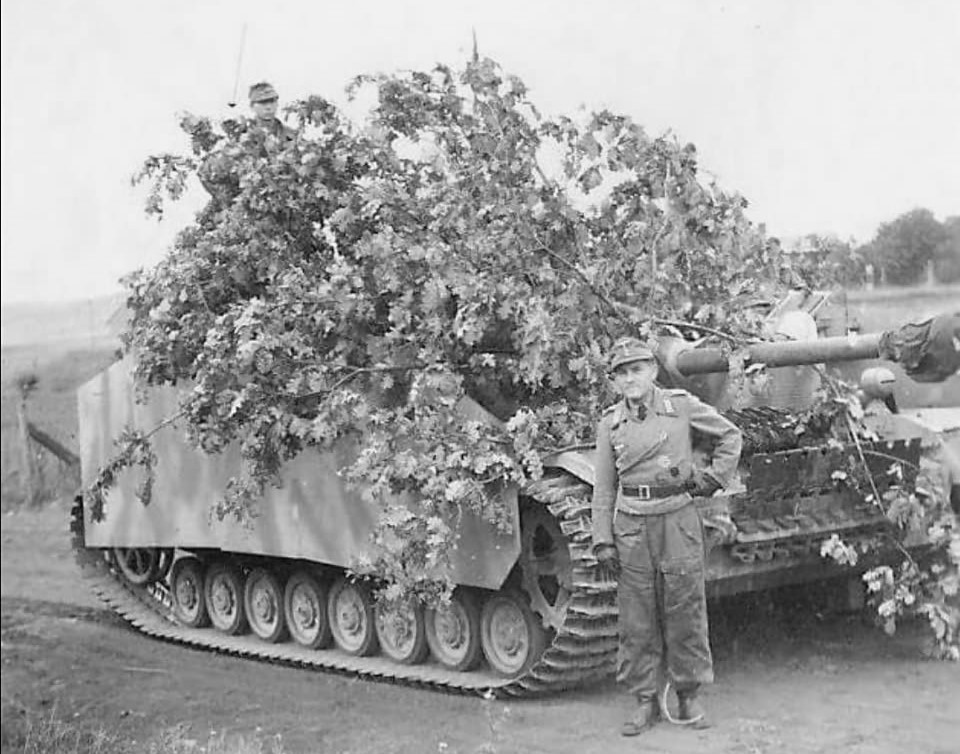 A well-camouflaged StuG IV.
A well-camouflaged StuG IV.
Still, StuGs, especially those with the long 7.5 cm guns, often found themselves being used as tank destroyers. They were very effective in this role, particularly when using defensive tactics that reduced the limitations imposed by the lack of a turret.
In the latter half of the war, Germany struggled to replace lost tanks, while the Allies’ own production only increased. Because of this StuGs found themselves in the anti-tank role more often, and in many cases were sent to Panzer units to replace lost tanks and tank destroyers.
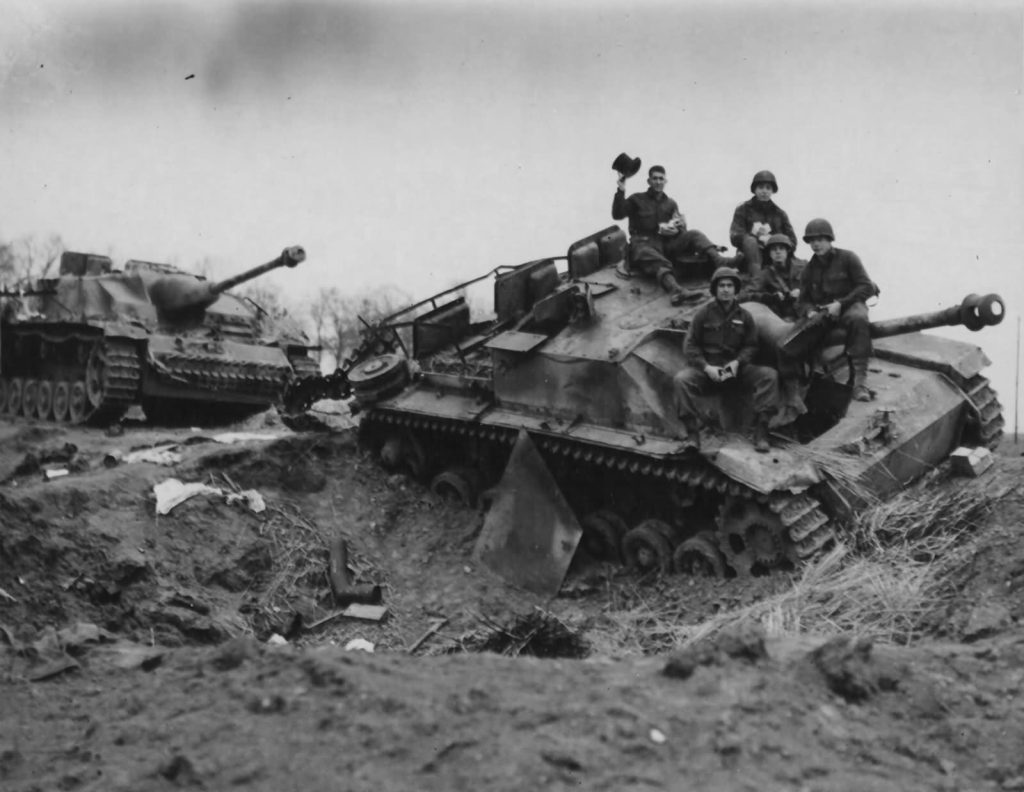 US Soldiers post on a knocked out StuG III.
US Soldiers post on a knocked out StuG III.
In fact, by the end of the war, StuGs were more often than not used in the anti-tank role.
Today, there are a large number of surviving StuG IIIs, many of which are in running condition. Only four StuG IVs remain, however.
News
The Hanging Temple: China’s 1,500-Year-Old Cliffside Marvel of Faith and Engineering
The Hanging Temple: China’s 1,500-Year-Old Cliffside Marvel of Faith and Engineering Perched precariously on the cliffs of Mount Heng in Shanxi Province, China, the Hanging Temple, also known as Xuankong Temple, Hengshan Hanging Temple, or Hanging Monastery, is an architectural…
The Willendorf Venus: A 30,000-Year-Old Masterpiece Reveals Astonishing Secrets
The Willendorf Venus: A 30,000-Year-Old Masterpiece Reveals Astonishing Secrets The “Willendorf Venus” stands as one of the most revered archaeological treasures from the Upper Paleolithic era. Discovered in 1908 by scientist Johann Veran near Willendorf, Austria, this small yet profound…
Unveiling the Maya: Hallucinogens and Rituals Beneath the Yucatán Ball Courts
Unveiling the Maya: Hallucinogens and Rituals Beneath the Yucatán Ball Courts New archaeological research has uncovered intriguing insights into the ritual practices of the ancient Maya civilization. The focus of this study is a ceremonial offering found beneath the sediment…
Uncovering the Oldest Agricultural Machine: The Threshing Sledge’s Neolithic Origins
Uncovering the Oldest Agricultural Machine: The Threshing Sledge’s Neolithic Origins The history of agricultural innovation is a fascinating journey that spans thousands of years, and one of the earliest known agricultural machines is the threshing sledge. Recently, a groundbreaking study…
Nara’s Ancient Sword: A 1,600-Year-Old Protector Against Evil Spirits
Nara’s Ancient Sword: A 1,600-Year-Old Protector Against Evil Spirits In a remarkable discovery that has captured the attention of archaeologists and historians alike, a 7.5-foot-long iron sword was unearthed from a 1,600-year-old burial mound in Nara, Japan. This oversized weapon,…
The Inflatable Plane, Dropped Behind the Lines for Downed Pilots
Experimental The Inflatable Plane, Dropped Behind the Lines for Downed Pilots The Inflatoplane from Goodyear was an unconventional aircraft developed by the Goodyear Aircraft Company, a branch of the renowned Goodyear Tire and Rubber Company, also famed for the Goodyear…
End of content
No more pages to load











